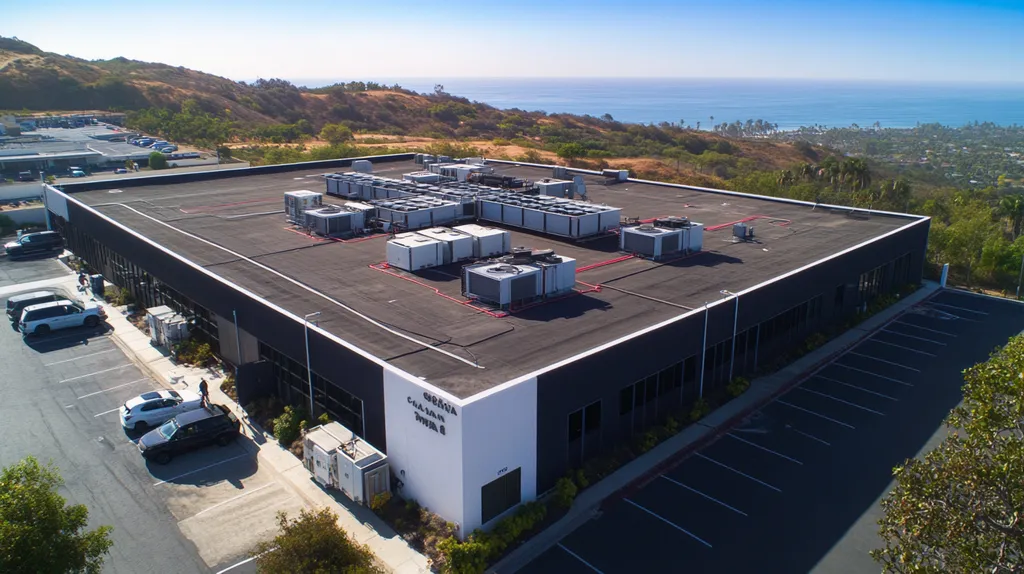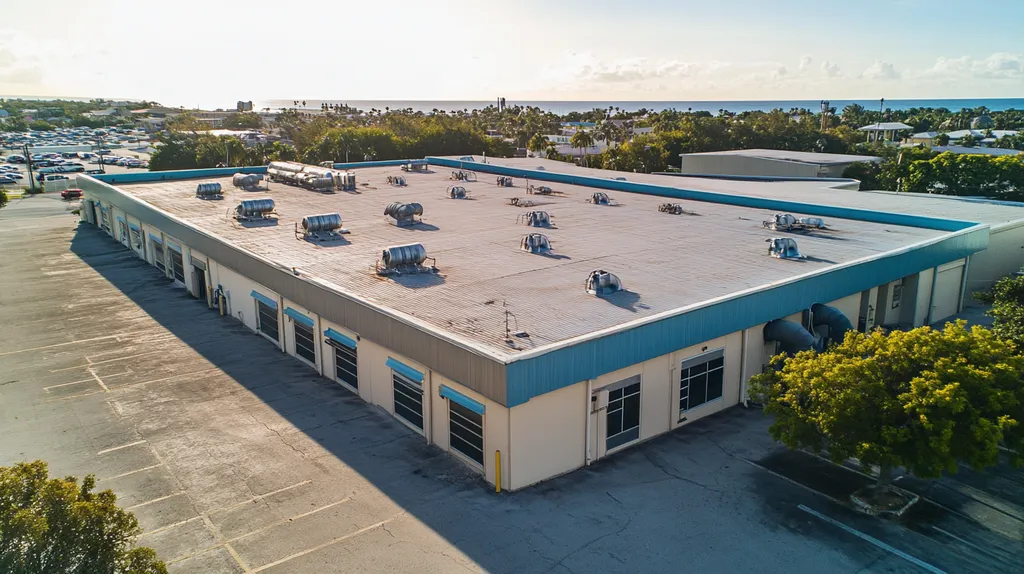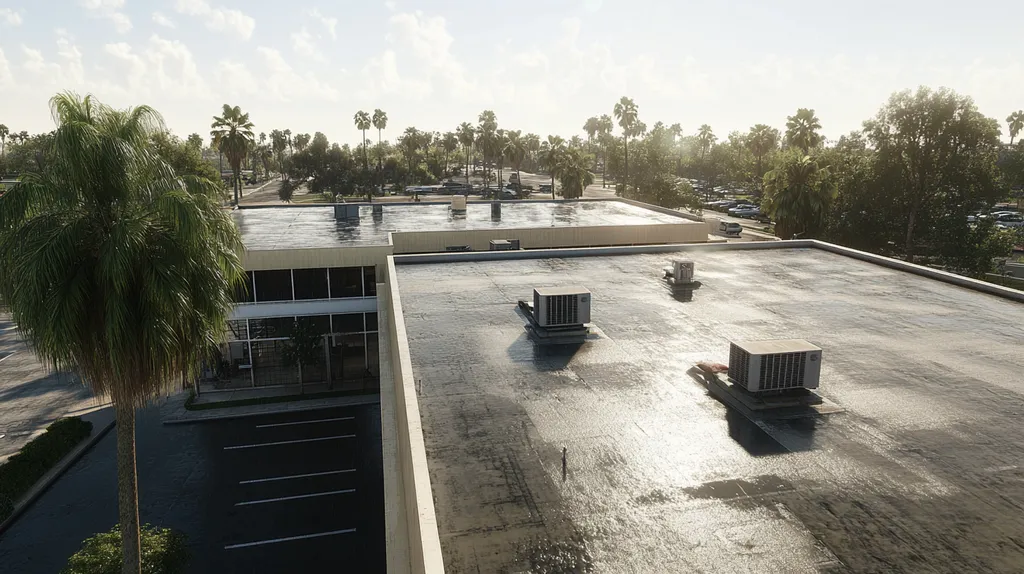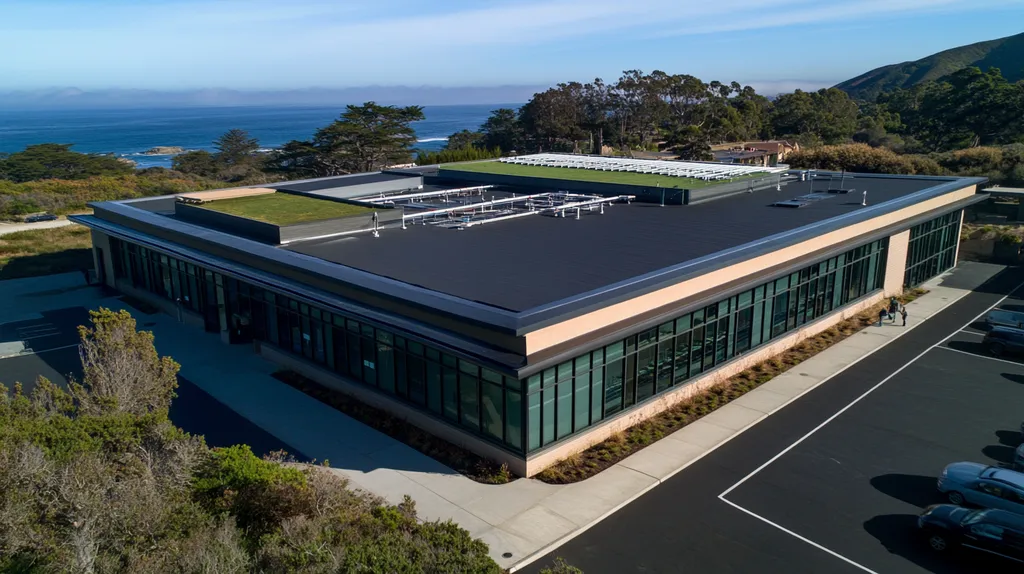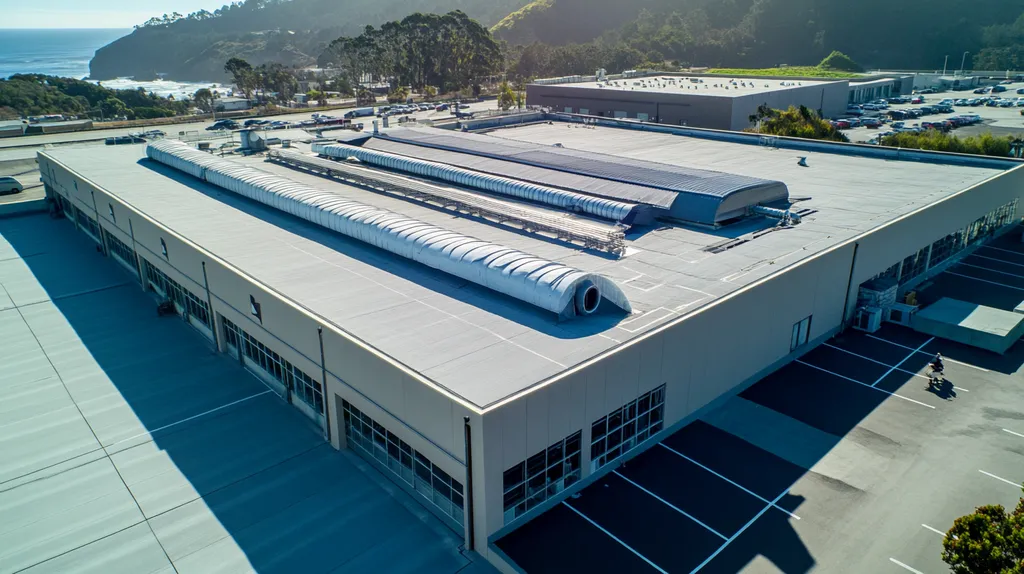As commercial energy costs continue to soar, understanding the lifespan of solar panels has become critical for business owners seeking sustainable solutions. With solar installations representing investments of $50,000 to $500,000 or more, the stakes are significant.
While manufacturers typically guarantee 25-30 years of performance, actual lifespans can vary dramatically based on installation quality, maintenance practices, and environmental conditions.
This comprehensive guide examines the key factors affecting solar panel longevity and helps property owners maximize their renewable energy investments through informed decision-making.
SECTION 1: THE BASICS EXPLAINED
Grasping the average lifespan of solar panels is crucial for commercial property owners aiming to invest wisely in renewable energy. While studies indicate that many panels can last 25 years or more, it’s important to understand that their efficiency may diminish over time. These insights are vital for shaping financial forecasts and improving facility management strategies.
What It Is (In Plain Language)
Solar panels are specially designed devices that convert sunlight into electrical energy. When mounted on commercial roofs, these panels harness solar power, helping to lower energy costs and enhance sustainability. Each solar panel consists of photovoltaic cells that generate electricity when bathed in sunlight.
Typically, the average lifespan of solar panels falls between 25 to 30 years. However, it’s essential to note that their performance can decline slightly each year. This means businesses can count on efficient energy generation for two to three decades, delivering a solid return on investment with proper maintenance.
Understanding this lifespan is beneficial for financial and operational planning. Regular upkeep can maximize the panels’ performance, while awareness of degradation helps property owners budget for potential repairs or replacements down the road.
Numerous factors, including manufacturing quality and environmental elements, play a role in determining the durability and efficiency of solar panels over their lifespan.
Why It Matters (To Your Building)
The lifespan of solar panels significantly influences a building’s energy strategy and long-term financial outlook. Making an investment in solar energy demands a careful evaluation of the technology’s longevity to ensure sustained positive cash flow. This is especially crucial for businesses operating under tight budgets, where lower energy costs can make a substantial difference.
Moreover, the performance and durability of solar panels can elevate property value. Buildings equipped with efficient solar systems often garner more interest from potential tenants or buyers, who prioritize energy alternatives. A clear understanding of lifespan expectations can boost marketability.
The condition of the roof that supports the panels is another critical factor. A robust, well-maintained roof is essential for securely housing solar installations throughout their expected lifespan. Property owners should verify that roofing materials can adequately support solar panels over the long run.
In the end, knowing how long solar panels are likely to last equips property owners to make enlightened choices regarding energy utilization, facility management, and broader sustainability efforts.
How It Works
Solar panels operate by capturing sunlight and converting it into usable energy through photovoltaic technology. When sunlight strikes the panels, electrons within the photovoltaic cells become energized, producing an electric current. This flow of electricity can be utilized immediately or stored in batteries for later use.
As time progresses, solar panels undergo a natural degradation process, leading to decreased efficiency and energy output. Typically, this degradation ranges from 0.5% to 1% annually, which means a panel initially generating 100% of its rated output may only produce about 75% by the end of its lifespan.
Recognizing how solar panels function allows property owners to appreciate the importance of routine maintenance and inspections. Keeping the panels clean and free from obstructions maximizes energy production.
Additionally, conducting regular assessments of panel performance can confirm that the system operates efficiently. This proactive approach not only ensures optimal functionality but also helps identify potential issues before they escalate.
SECTION 2: PRACTICAL APPLICATIONS
The choice to install solar panels on commercial roofs is a significant commitment for property owners, with potential long-term rewards and risks. Given that solar panels have an average lifespan of 25 to 30 years, understanding their practical applications becomes critical. Businesses can not only slash energy expenses but also bolster their sustainability initiatives through these systems. However, it’s essential for owners to grasp how solar panels integrate with existing roofing materials and structures to optimize their investment.
Common Uses & Examples
Solar panels are versatile tools that provide substantial advantages for various types of commercial properties. They are frequently installed on industrial warehouses, retail spaces, and office buildings, each harnessing renewable energy to cut operating costs.
For instance, a logistics center can capitalize on solar energy to power its operations, which effectively reduces reliance on grid electricity and translates to significant cost savings. This switch not only enhances the bottom line but also elevates the company’s credibility in sustainability.
Similarly, educational institutions are increasingly installing solar panels, not only to reap financial benefits but also to serve as educational platforms. These installations demonstrate the importance of renewable energy to students and the community alike.
No matter the setting, strategically placing the solar panels and planning their layout ensures optimal energy generation while preserving the roof’s integrity over time.
When You Need It Most
Timing the installation of solar panels is vital for realizing maximum benefits. Businesses often face rising energy demands during peak utility cost periods, particularly throughout the summer months.
Installing solar panels before these high-demand times can lead to considerable financial savings. Facilities with energy-intensive operations during the summer stand to gain immensely from solar power during these peak periods.
Moreover, organizations experiencing rapid expansion can gain immediate advantages by turning to solar energy. By making an early investment, they can scale up their energy supply without a complete dependence on the grid, insulating themselves from potential future price hikes.
Investing in solar power at critical growth moments not only helps manage costs but also aligns with overarching corporate sustainability goals.
Interactions With Other Systems
Solar panels function as integral components of a building’s overall energy strategy, interacting closely with existing roofing systems and other building elements. Recognizing these interactions is crucial for optimizing both efficiency and longevity.
For example, employing proper mounting techniques is essential to prevent water intrusion or damage to the roof beneath. A solar array that is poorly installed can jeopardize the roof’s performance, leading to costly and unexpected repairs.
Integrating solar energy with roof insulation and ventilation systems can dramatically enhance overall energy efficiency. Reflective roofing materials, for instance, can work in tandem with solar panels to reduce energy consumption and improve cooling effects.
Thoughtful planning and installation are key to ensuring that both solar and roofing systems complement each other, crafting a cohesive energy ecosystem that brings favorable outcomes for property owners.
SECTION 3: KEY TERMINOLOGY DECODED
Grasping the language around solar panels isn’t just helpful—it’s essential for commercial property owners who want to make informed decisions. Misunderstandings about key terms can lead to inefficient energy strategies and wasted resources. For example, understanding what a “megawatt” is can be a game-changer when evaluating energy needs. This section demystifies important terminology, empowering property owners to engage confidently in discussions about their solar investments.
Essential Terms Explained
Solar panels convert sunlight into electricity, yet the associated jargon can feel overwhelming. The term “photovoltaic (PV)” describes the technology that enables sunlight to generate electricity. Recognizing this concept helps property owners understand how their solar systems operate. Another crucial term is “kilowatt-hour (kWh),” which quantifies energy consumption or production over time.
When assessing solar panel lifespan, “degradation rate” is a key factor. This rate indicates how much a panel’s efficiency decreases each year. Generally, panels experience a degradation rate of about 0.5% to 1% annually. Understanding this helps in gauging long-term performance and expected energy savings.
Additionally, “inverter” is an important term to know. This device converts direct current (DC) generated by solar panels into alternating current (AC), which buildings use. A solid grasp of inverters enhances understanding of overall system efficiency, establishing a foundation for informed decisions regarding solar panel investments.
Industry Jargon Translated
Clarifying industry jargon can significantly improve communication about solar panels and their practical applications. “Net metering” is a term that allows property owners to earn credits for any surplus energy produced by their solar systems. This policy can greatly reduce monthly energy expenses and is vital for facilities managers to understand.
“Building-integrated photovoltaics (BIPV)” describes solar technology that merges seamlessly with a building’s materials. For instance, solar shingles can function as both roofing and energy-generating components. Familiarity with such concepts encourages property owners to explore innovative solutions that align with their energy objectives.
Another essential term is “lifetime performance warranty,” which covers potential defects and efficiency loss over time. Knowing the specifics of warranties affects investment decisions and risk evaluations. By comprehending these terms, business owners can navigate the solar market with greater assurance and clarity.
Measurement & Units Simplified
Understanding key measurements is crucial for evaluating solar panel performance, especially regarding financial outcomes. The term “watt” measures a solar panel’s power output. A higher wattage usually translates to increased energy production, resulting in better returns. This measurement is fundamental for assessing whether the panel meets a facility’s energy needs.
The “capacity factor” quantifies the actual energy output of a solar installation compared to its maximum potential. This percentage helps property managers forecast how much energy their system can generate, aiding in accurate energy savings predictions.
Lastly, “system efficiency” measures the percentage of sunlight converted into usable electricity. Higher efficiency means more energy production from fewer panels, optimizing available roof space. Mastering these measurements empowers property owners to make strategic, financially sound decisions regarding their solar investments.
SECTION 4: DECISION FACTORS
As the commercial roofing landscape evolves, the integration of solar panels is no longer just an option but a necessity for property owners. Making informed decisions regarding solar installation is critical because poor choices can lead to significant financial losses and decreased energy efficiency. Cost considerations, performance trade-offs, and the durability of solar panels are pivotal factors that should be thoroughly evaluated. Carefully assessing these elements can set the foundation for a successful investment.
Cost Considerations
Cost is often the primary concern when embarking on a roofing project, particularly for solar panel installations. The initial expenses—including the purchase of panels, installation labor, and necessary roofing modifications—can be substantial. However, property owners should also explore available incentives like tax credits and rebates that can significantly offset expenses.
Financing options, such as solar leases and power purchase agreements (PPAs), are worth consideration as they can ease upfront costs. On the operational side, it’s essential to factor in ongoing costs, such as maintenance and potential repairs, especially since the roofing material must last as long as the solar panels to maximize the investment’s value.
Conducting a comprehensive cost-benefit analysis is a smart strategy. For instance, a timely investment can lead to lower operational costs over time, enhancing overall profitability and aligning with financial goals.
In summary, a clear understanding of financial implications empowers property owners to make decisions that fit within their budgetary frameworks and optimize their solar investments.
Performance Trade-offs
Performance is a crucial element in the decision-making process for solar installations. While solar panels can significantly enhance energy efficiency, their performance can vary based on type and installation angle. Some panels excel in particular conditions, but without a thorough analysis, businesses might miss critical insights.
Commercial roofs present unique challenges such as debris, water pooling, and exposure to severe weather. Selecting high-performance panels can mitigate these risks, but this often comes with a higher initial price tag. Business owners must decide if the benefits of improved efficiency justify the extra cost, weighing them against their specific energy goals.
It’s also vital to evaluate warranty terms. Solar panels with longer warranties can provide peace of mind regarding their performance, while lower-cost options might not offer the same level of assurance. Understanding these nuances helps business owners strike a balance between upfront investment and long-term energy savings.
Ultimately, considering performance trade-offs ensures that businesses can make sound decisions in line with their operational sustainability goals.
Lifespan & Durability Factors
The typical lifespan of solar panels ranges from 25 to 30 years. However, this longevity can be significantly influenced by installation quality and the materials used. Durability is closely tied to the type of roof, local weather conditions, and maintenance practices.
While solar panels are engineered to endure harsh environmental conditions, their durability hinges on proper installation and regular inspections. For example, flat roofs may require more frequent checks compared to sloped roofs, potentially escalating maintenance costs.
The choice of roofing materials is equally important. Some materials may degrade faster than others, affecting the overall lifespan of the solar installation. It’s essential for property owners to invest in resilient roofing that is compatible with solar technology.
Implementing a reliable monitoring system can further enhance system longevity by ensuring that performance issues are identified early. Awareness of these durability factors allows for more sustainable and long-lasting investments in solar technology.
SECTION 5: COMMON CHALLENGES
Installing solar panels on commercial roofs comes with its own set of challenges that can affect efficiency and durability. With businesses increasingly investing in renewable energy, recognizing these hurdles is essential to protecting their investment. Problems like improper installation, neglecting maintenance, and environmental impacts can not only curtail the lifespan of solar panels, but also lead to unexpected expenses down the line. This section will highlight common issues, essential warning signs to monitor, and proactive strategies to bolster performance and longevity.
Frequent Problems & Solutions
One critical challenge is improper installation, which can jeopardize the structural integrity of solar panels. If panels are not mounted securely, they may be subject to damage during extreme weather conditions. To avoid this, it’s vital to work with qualified professionals who specialize in solar installations, ensuring panels are positioned correctly and securely.
Debris accumulation is another frequent issue that can hinder solar panel performance. Leaves, dust, and snow can block sunlight, leading to a marked decline in energy production. Regular biannual cleanings and inspections can significantly reduce these obstructions, keeping energy output optimal.
Electrical problems may also arise from aging wires or loose connections, often lurking undetected until energy output drops. Engaging a certified technician for routine electrical assessments can help identify potential issues before they turn into major repairs.
Environmental stressors, such as extreme temperatures or heavy winds, can wear on solar systems over time. Choosing high-quality, weather-resistant materials during installation is crucial for protecting against these external factors.
Warning Signs To Watch For
Being vigilant about warning signs can prevent costly repairs in the future. A stark indication of trouble is a significant drop in energy production, often visible through utility bills. If energy output declines without a corresponding reduction in usage, it’s time to consider maintenance or repairs.
Physical damage, such as cracks in the panels or loose connections, is another red flag that should not be ignored. These visible issues can threaten the solar system’s overall integrity and prompt more extensive repairs if left unaddressed. Routine visual inspections can help catch these damages early.
Noises from the inverter, such as buzzing or clicking, can indicate potential malfunctions. Timely intervention from professionals is key to diagnosing any electrical issues that may impede the solar system’s efficiency.
Lastly, pooling water around the solar installation site may indicate drainage or sealing problems that require immediate action. Ignoring these issues can accelerate wear on both the roof and solar panels.
Preventative Approaches
Implementing a robust preventative maintenance plan significantly enhances the longevity of solar panels. Establishing a regular maintenance routine that includes thorough inspections and cleaning can identify potential problems early on. Experts commonly recommend scheduling these services at least twice a year, adapting for local climate conditions.
Utilizing professional services for inspections will ensure that all components, from roofing integrity to electrical connections, remain in top shape. A detailed checklist for both solar and roofing elements can streamline inspections and enhance efficiency.
Additionally, taking proactive measures to shield solar panels from severe weather—such as installing protective awnings—can minimize damage. Investing in superior materials during installation can pay dividends later, often designed specifically to withstand harsh environmental conditions.
Finally, equipping facility managers and property owners with proper care education fosters a culture of proactive maintenance. Awareness and understanding of warning signs can enhance the efficiency and lifespan of solar systems, ultimately translating to better performance and cost savings over the long haul.
SECTION 6: NEXT STEPS & RESOURCES
The move to solar energy is not just an enhancement for commercial properties; it’s a transformative decision that can yield significant returns and bolster environmental responsibility. With solar panels typically lasting between 25 to 30 years, understanding how to choose and maintain them wisely is essential. Adequate planning is crucial, as gaps in knowledge can lead to diminished performance and expensive repairs, underscoring the need for informed decisions in this rapidly evolving industry.
Questions To Ask Providers
When discussing options with solar panel providers, property owners should be prepared with focused questions. Inquire specifically about the warranties offered and the expected lifespan of the panels, which typically falls within the 25 to 30-year range. Understanding the degradation rate—generally around 0.5% per year—is vital, as it directly affects long-term energy output.
Also, ask about their installation practices and their track record in commercial settings. A reputable provider should clearly detail the mounting systems that work best with your specific roof type and the local climate. Questions regarding their maintenance offerings are equally important, as consistent upkeep is key to extending the life of solar panels.
Finally, ask for examples of their previous projects. Requesting case studies can illuminate their proven success and how they navigated common challenges, aiding property owners in assessing reliability and expertise.
Industry Standards & Guidelines
Grasping industry standards is essential for making informed solar panel installation decisions. The National Renewable Energy Laboratory (NREL) establishes guidelines focused on efficiency and safety, ensuring that solar systems are built to perform well and endure. Familiarizing oneself with these standards can assist property owners in critically evaluating the claims made by solar providers.
Another valuable resource is the Solar Rating and Certification Corporation (SRCC), which issues certifications for solar thermal systems. While it primarily focuses on thermal applications, its guidelines can still offer insights applicable to photovoltaic systems.
Organizations like the American Solar Energy Society (ASES) also provide ongoing educational resources to stakeholders in the solar field. Their materials keep owners informed of technological advancements and best practices, empowering them to make cutting-edge decisions.
Further Learning Simplified
Continual learning is vital in the fast-paced solar sector. Numerous resources are available to help commercial property owners deepen their understanding of solar technology. Online platforms host various courses on solar system design, installation, and maintenance specifically crafted for non-technical audiences.
Additionally, podcasts and webinars provide an accessible way to stay updated on industry trends. These formats cover a range of topics, from financing options and recent innovations to practical case studies from other businesses.
Local workshops and seminars offer invaluable opportunities for face-to-face learning with experts. Attending these events allows property owners to ask specific questions and network with professionals who can provide further guidance in their solar journey.
Looking Ahead
With commercial energy costs projected to rise 30% over the next decade, understanding solar panel lifespan has never been more critical for business sustainability.
While the standard 25-30 year lifespan of quality solar installations offers compelling ROI potential, success depends entirely on informed planning and diligent maintenance.
Property owners who grasp the fundamentals of degradation rates, installation best practices, and preventative maintenance protocols position themselves to maximize their renewable energy investments.
The future of commercial property management increasingly depends on renewable energy integration, making solar expertise an essential component of facility planning.
By taking action now to implement proper solar solutions, businesses can secure decades of reduced operating costs while contributing to a more sustainable future.
FREQUENTLY ASKED QUESTIONS
Q. What is the average lifespan of solar panels on commercial roofs?
A. Solar panels typically last between 25 to 30 years. While they are efficient initially, their performance may gradually decline, generally by about 0.5% to 1% annually. Understanding this lifespan is essential for planning energy efficiency and budgeting for possible future repairs.
Q. How do solar panels integrate with commercial roof materials?
A. The interaction between solar panels and roofing materials is critical for optimal performance. Proper installation is crucial to prevent issues like water damage or roof deterioration. Facilities managers should consider the roof’s condition and the materials used to ensure compatibility with the solar infrastructure.
Q. What key terms should I know about commercial roof solar panels?
A. Understanding terms like “photovoltaic” and “kilowatt-hour” is crucial in evaluating solar energy systems. Additionally, knowing the degradation rate helps assess long-term efficiency. Familiarity with these concepts empowers property owners to make informed decisions about their energy investments.
Q. What factors impact the decision to install solar panels on commercial roofs?
A. Cost, performance, and lifespan are key factors for property owners considering solar installations. High upfront costs can be offset by available incentives and financing options. It’s essential to evaluate the roof’s durability and select high-quality panels to ensure value over time.
Q. What common challenges do commercial roofs face with solar panel installations?
A. Challenges include improper installation, debris accumulation, and harsh environmental impacts which can reduce efficiency. Regular maintenance and using high-quality, weather-resistant materials can mitigate these issues. Awareness of these challenges is vital for maintaining the integrity and performance of solar systems.
Q. What should I ask solar panel providers for my commercial roof?
A. Inquire about warranties, expected lifespan, degradation rates, and their installation practices. It’s essential to understand the maintenance they offer and request case studies or examples of past projects to evaluate their expertise and reliability in commercial settings.
Q. How can I enhance the performance of solar panels on my industrial roof?
A. Implementing a preventative maintenance plan is vital for maximizing solar panel efficiency. Regular inspections, cleanings, and professional assessments can identify issues early. Additionally, choosing high-quality materials and optimal installation techniques will enhance the longevity and reliability of the system.

